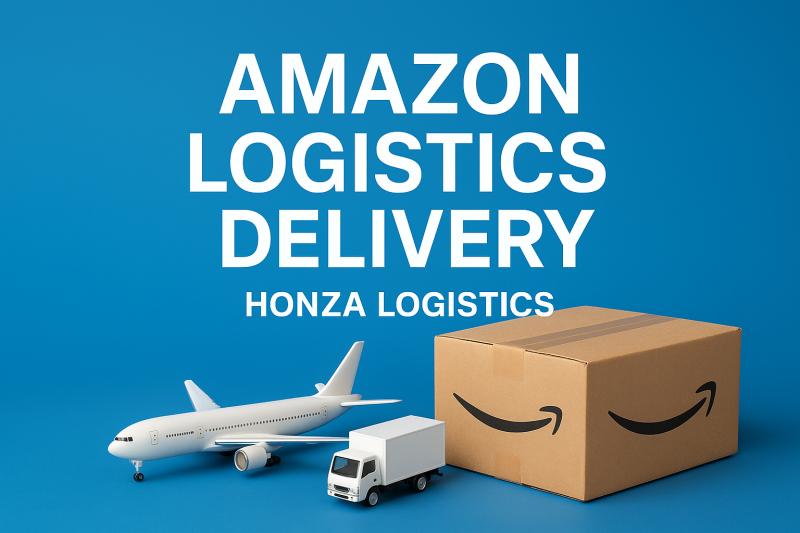Amazon Logistics (FBA) is a comprehensive logistics service offered by Amazon. FBA allows sellers to store products in Amazon’s warehouses. Amazon handles storage, order sorting, packaging, and delivery. They also offer buyer consultation, returns, and other services. This helps sellers save on manpower, material, and financial resources.
1.Warehousing and Storage: Amazon provides a global warehouse and logistics network to assist customers in handling the storage and shipment of goods.
2.Packaging: Provide various types of packaging options including carton adhesive tape foam and wooden frame to help customers protect goods and reduce damage and packaging costs.
3.Transportation: Provide global logistics services including international transportation, regional transportation, and local distribution. Amazon also offers various shipping options, such as sea, air, and rail transportation.
4.Delivery and Distribution: Provide fast and reliable delivery and distribution services to ensure timely delivery of customers’ goods.
5.Returns and Customer Service: Provide comprehensive return and customer service support, including return processing, consultation, and complaints.
Amazon Logistics Shipping Method
The three shipping modes of Amazon Logistics are FBA FBM and Overseas warehouse. Sellers can choose different shipping modes based on the characteristics of their products. Understanding these three modes helps sellers arrange product shipping more efficiently and appropriately. But it is not necessarily a fixed model that is suitable for any type of seller. Many sellers often combine two modes to achieve maximum profits.

Three Models of Amazon Logistics
1.FBA: The full name of FBA is Fulfillment By Amazon, which stands for Amazon Logistics. It is a one-stop logistics service provided by Amazon, including warehousing, picking, packaging, delivery, payment collection, customer service, and return processing. The seller prepares goods in advance to the Amazon warehouse, and after the customer places an order, the Amazon warehouse directly ships them to the customer.
2.FBM: FBM stands for Fulfillment by Merchants, which means seller self delivery or self shipment. Self shipment refers to the seller directly shipping from domestic suppliers or warehouses to foreign customers after receiving customer orders, that is, the seller is responsible for a series of activities such as warehousing, sorting, packaging, delivery, and customer service. Self delivery can also be divided into three categories: postal service, express delivery, and dedicated line.
3.Overseas warehouse:overseas warehouse refers to a one-stop control and management service provided by logistics service providers independently or jointly for sellers to store, sort, package, and deliver goods at the sales target location. The seller stores the goods in the local warehouse and responds quickly when the buyer has a demand, sorting, packaging, and delivering the goods in a timely manner.
The advantages and disadvantages of Amazon Logistics
The Amazon logistics model has obvious advantages in fast delivery and flexible inventory management but it also has disadvantages such as high costs and high inventory risks. Sellers should decide whether to use FBA based on their own business needs, product characteristics, and target market.
Advantage
-
Fast delivery: Amazon ensures fast delivery by using its own warehouses and delivery network.
-
Flexible inventory management: Amazon uses advanced systems for precise inventory management based on demand analysis.
-
Multiple delivery methods: Amazon offers regular, express, same-day, and weekend delivery options.
-
High-quality after-sales service: Amazon provides 7-day no-questions-asked returns and a 30-day exchange guarantee.
Disadvantages
1.High cost: Using FBA will incur higher storage fees, order processing fees, and return processing fees, which may compress profit margins for products with smaller profit margins.
2.Inventory risk: Although Amazon provides good warehousing services, sellers still have to bear the risk of inventory backlog. Especially for seasonal products or products with significant market demand fluctuations they may face unsold issues.
3.Difficulty in inventory control: Due to the storage of goods in Amazon warehouses sellers are unable to directly monitor inventory status, which to some extent increases the difficulty of inventory management.
Conclusion
Amazon Logistics is a logistics system created by Amazon for sellers. Sellers send goods to Amazon’s warehouse in advance. Amazon manages storage, order sorting, and packaging. Amazon handles delivery, customer service, and return/exchange processing. Its advanced technology and logistics network ensure efficient delivery. This improves the customer shopping experience and helps sellers grow their businesses. However, sellers must pay related fees.
Honza International Logistics was founded in 2013 and has professional transportation experience and a dedicated transportation team. We have many warehouses in China and can provide warehousing services. The target customers are spread all over the world. Looking forward to working with you.



